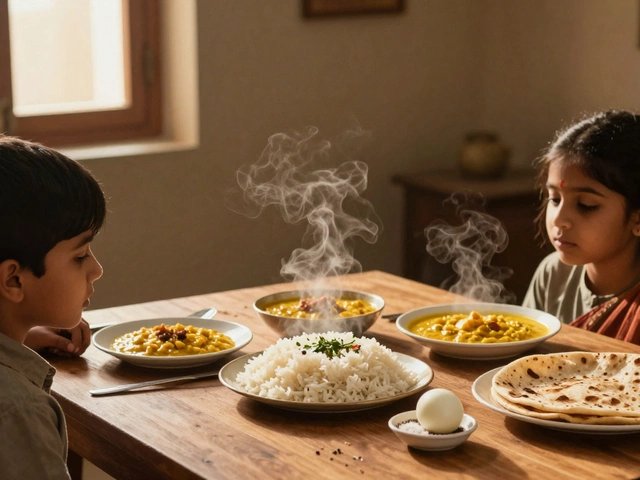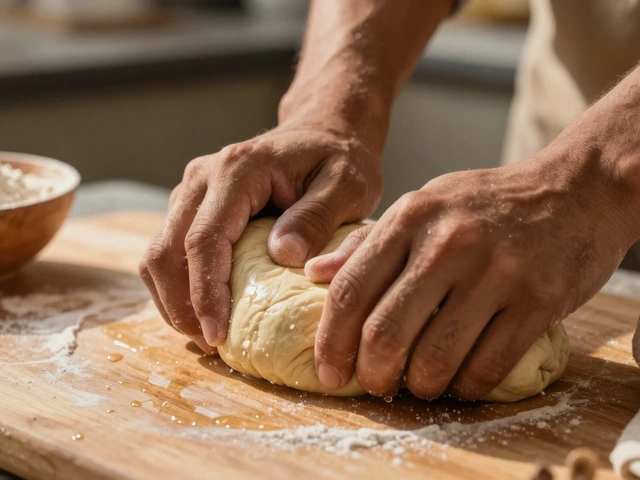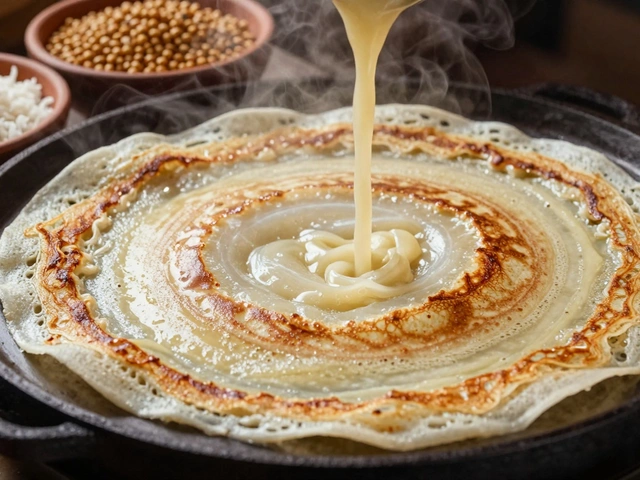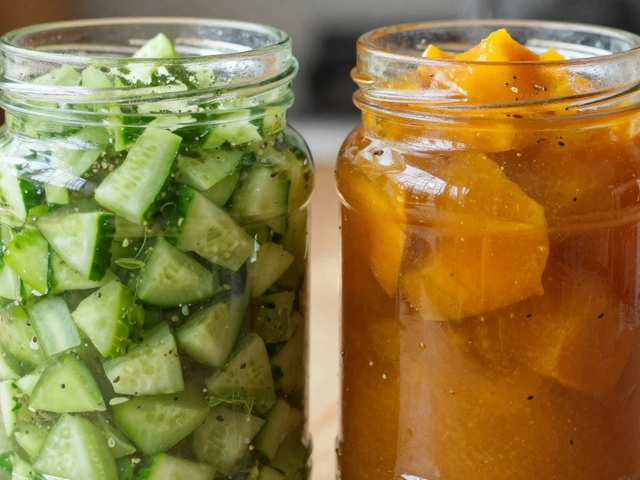Choosing the right oil for tandoori chicken can be a game-changer. You might think any cooking oil does the job, but not all oils handle high heat, blend with spices, or give you that charred finish you crave in this dish.
The classic tandoori recipe uses oil to stick spices to your chicken, keep it juicy during roasting, and add a subtle kick to the final flavor. Go too heavy, and you drown the spices. Too little, and the chicken dries out quicker than a summer sidewalk. Picking an oil that fits both your taste and your cooking setup really matters here.
If you use the oven, grill, or even an air fryer, the oil’s smoke point (yeah, that’s the temp where it starts burning and tasting gross) plays a huge role. Some oils burn fast, while others stay cool and neutral even under serious heat.
- Why Oil Matters in Tandoori Chicken
- The Most Popular Oils Compared
- How Each Oil Affects Flavor and Texture
- Health and Smoke Point Tips
- Common Mistakes with Oil
Why Oil Matters in Tandoori Chicken
Let’s get real—oil isn’t just here to make your tandoori chicken less sticky. It’s actually key to the whole dish coming out juicy, tender, and loaded with flavor. Oil works backstage, making sure spices cling to the chicken and sink in while it marinates. Without the right oil, you’ll notice bland, dry bites that feel nothing like the tandoori chicken you get at a proper eatery.
When your chicken hits high heat—whether it’s a grill, oven, or tandoor—you need an oil that won’t burn right away. Burnt oil can mess up the taste, giving off that bitter, almost acrid afterbite. Oils like mustard, peanut, or even light olive oil hold up better, letting your spice mix shine.
“Good oil brings out the richness of spices and keeps the meat moist; skip it and you lose half the joy of a classic tandoori chicken,” says chef Ranveer Brar, known for bringing street food favorites to Indian home kitchens.
Another big reason for picking the right oil is to get that famous tandoori char. The oil helps brown the chicken just right, balancing crisp edges with juicy insides. Using oils with a high smoke point also means you can crank up the heat for a deep, smoky flavor—without dodging your smoke alarm every time.
Here’s what oil really does for tandoori chicken:
- Binds the marinade to the chicken for full flavor
- Keeps the meat tender and juicy under high heat
- Helps spices absorb deeper during marinating
- Gives the outside that slightly crispy, crave-worthy finish
| Oil Purpose | Why It Matters |
|---|---|
| Marinade Binder | Sticks spices and yogurt to chicken, even while grilling |
| Moisture Keeper | Prevents chicken from drying out, especially with lean cuts |
| Flavor Booster | Enhances taste of both spices and meat |
| Char Helper | Promotes browning without burning |
When you pick your oil on purpose, your entire tandoori chicken experience levels up—moist, smoky, and bursting with flavor every time.
The Most Popular Oils Compared
If you've searched for the best oil for tandoori chicken, you’ve probably seen a lot of debate about which oil beats the rest. Let’s get real about what’s out there and why it matters.
- Mustard Oil: Super common in North Indian homes, this oil gives a sharp kick and a color boost. It’s got a high smoke point, so it handles tandoor-level heat. If you’re after that traditional punchy flavor in your tandoori chicken, mustard oil is a classic pick.
- Sunflower Oil: This one stays neutral and doesn’t mess with the taste of the spices. It’s got a high enough smoke point for grilling or oven cooking, and it’s easy to find in most stores. It won’t make your chicken taste oily or mask the spicy flavor.
- Canola Oil: It’s all about light flavor and handling high heat. Canola is a safe bet if you want juicy chicken and crisp edges without any weird aftertaste. Plus, it’s on the healthier side for most diets.
- Ghee (Clarified Butter): Some people love adding a little melted ghee for big flavor. It brings a rich, buttery taste, especially if you brush it on right before finishing the cook. But if you use too much, you risk making the marinade greasy.
- Olive Oil (Light or Extra Light): You might spot this used in some modern recipes, but skip extra virgin olive oil—it doesn’t like high heat and its strong taste clashes with Indian spices. Light or extra light versions are better for the grill and don’t overpower your chicken.
If you’re still not sure, check out this quick data table that sums up popular oils with their smoke points and flavors:
| Oil | Smoke Point (°F) | Flavor Impact |
|---|---|---|
| Mustard Oil | 480 | Strong, traditional |
| Sunflower Oil | 450 | Very neutral |
| Canola Oil | 400 | Light, clean |
| Ghee | 485 | Rich, buttery |
| Light Olive Oil | 465 | Mild, barely noticeable |
See those numbers? Anything at or above 400°F is pretty much safe for high-heat tandoori chicken grilling. When picking your oil, match the flavor you want and the heat your cooking style demands. Small switches here make a big difference in how your dish turns out.
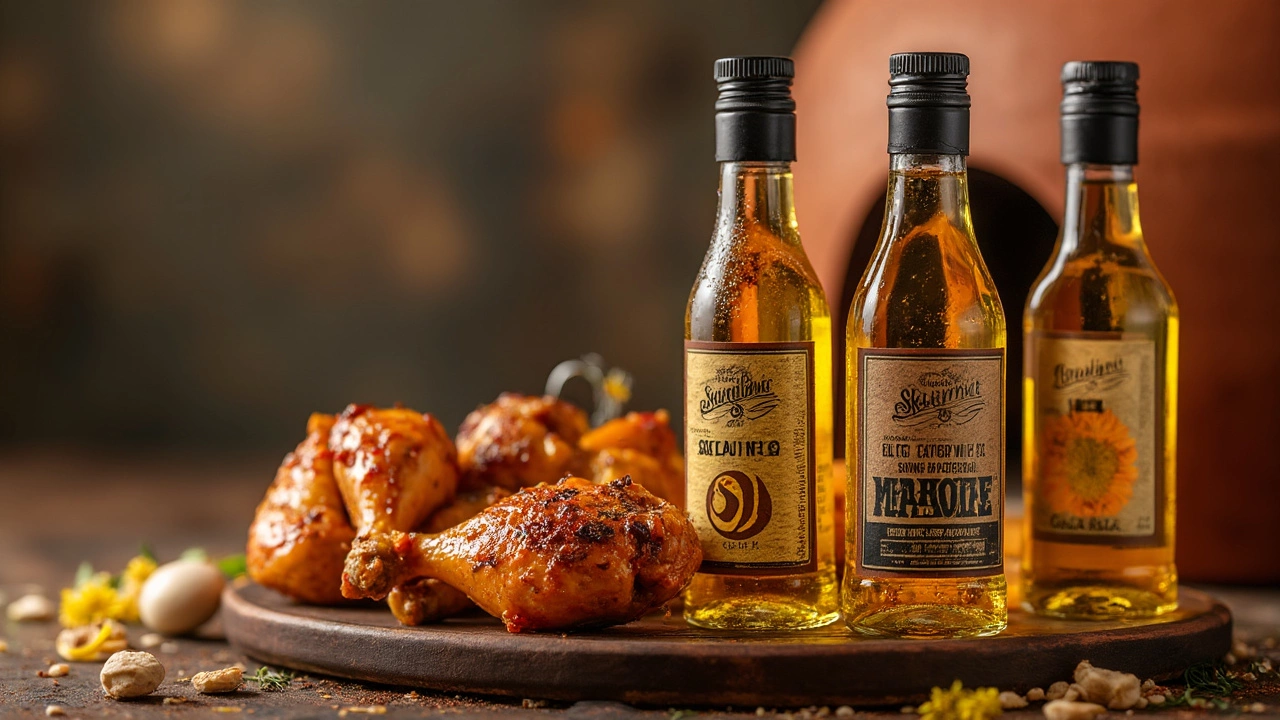
How Each Oil Affects Flavor and Texture
Let’s talk about how different oils actually change up your tandoori chicken. A lot of cooks think oil is just for grease, but it changes both flavor and how juicy or crispy your chicken turns out. Here’s what you can expect from the most popular choices:
- Vegetable oil: This one's super common since it’s cheap and tastes neutral. It won’t mess with your spice mix or smoky aroma from grilling. Great if you want your classic tandoori chicken spices to shine.
- Mustard oil: Loads of folks in North India swear by mustard oil for its sharp, earthy kick. It adds a kind of heat, almost like hot mustard, and really brings out the tang in the marinade. Just make sure to heat it till it smokes (this kills the raw smell).
- Ghee: If you want richer and creamier meat, try ghee—clarified butter. It gives a buttery finish and a ton of flavor but doesn’t overpower the spices. You’ll get a nice, slightly nutty taste and a softer bite.
- Olive oil: Extra virgin olive oil is healthy, but it’s got a strong flavor of its own. For tandoori, regular olive oil (not extra virgin) works better if you want something lighter but don’t want to risk burning at high heat.
- Sunflower or canola oil: Super neutral, high smoke point, and let the marinade do its work. You get a nice char without any weird aftertaste. Great if you want a clean, crisp finish outside and juicy inside.
The oil you pick actually helps the marinade stick, but it also controls how much sizzle you get in your crust. Want a crunchier outside? Go with something like ghee or a mix of ghee and oil. Want the flavor in the spices to stand out? Stick to neutral oils.
| Oil Type | Flavor Impact | Texture Impact |
|---|---|---|
| Vegetable Oil | Neutral, lets spices lead | Juicy inside, crisp outside |
| Mustard Oil | Sharp, earthy, pungent | Slightly tougher, tangy note |
| Ghee | Rich, nutty, buttery | Softer, creamier bite |
| Regular Olive Oil | Mild, slightly fruity | Light, can crisp well |
| Sunflower/Canola Oil | Very mild/nearly none | Clean finish, juicy meat |
For epic tandoori chicken, some chefs actually mix oils—half mustard oil for depth, half neutral oil for better smoke tolerance. If you want flavor plus crunch, that combo can be a winner. There’s no one perfect oil, but understanding these basics means you’ll never get greasy, flavorless chicken again.
Health and Smoke Point Tips
When making tandoori chicken, you want an oil that stands up to high heat without turning weird or toxic. This is where the “smoke point” comes in. Oils start to break down when heated past their smoke point, giving your food off-flavors and, even worse, releasing stuff that’s not good for you.
Here's a quick look at some oil options and their smoke points:
| Oil Type | Smoke Point (°F) | Health Facts |
|---|---|---|
| Canola Oil | 400° | Low in saturated fat, neutral flavor. |
| Sunflower Oil | 440° | High in vitamin E, neutral taste. |
| Peanut Oil | 450° | Great for high heat, mild nutty flavor. |
| Ghee (Clarified butter) | 485° | Traditional choice, rich taste, high in healthy fats. |
| Olive Oil (Regular) | 465° | Go for refined, not extra virgin, to avoid smoke. |
Don’t just grab a random oil thinking “fat is fat.” Look for oils that balance health and performance. Ghee is common in Indian cooking for a reason—it tastes awesome and handles heat like a champ. If you want a lighter vibe, canola and sunflower oils are good bets, thanks to their neutral flavors and high smoke points.
- Skip extra virgin olive oil—it burns too fast for grilling or oven-roasting at high temps.
- If you care about nutrition, stick with oils low in saturated fat and avoid anything with trans fats.
- Smarter choice? Use just enough oil to coat the chicken. This keeps calories in check and still gives you that juicy result.
The bottom line: For the best flavor, safety, and health, match your oil’s smoke point to your cooking method. Your tandoori chicken will come out perfect, not greasy or bitter.
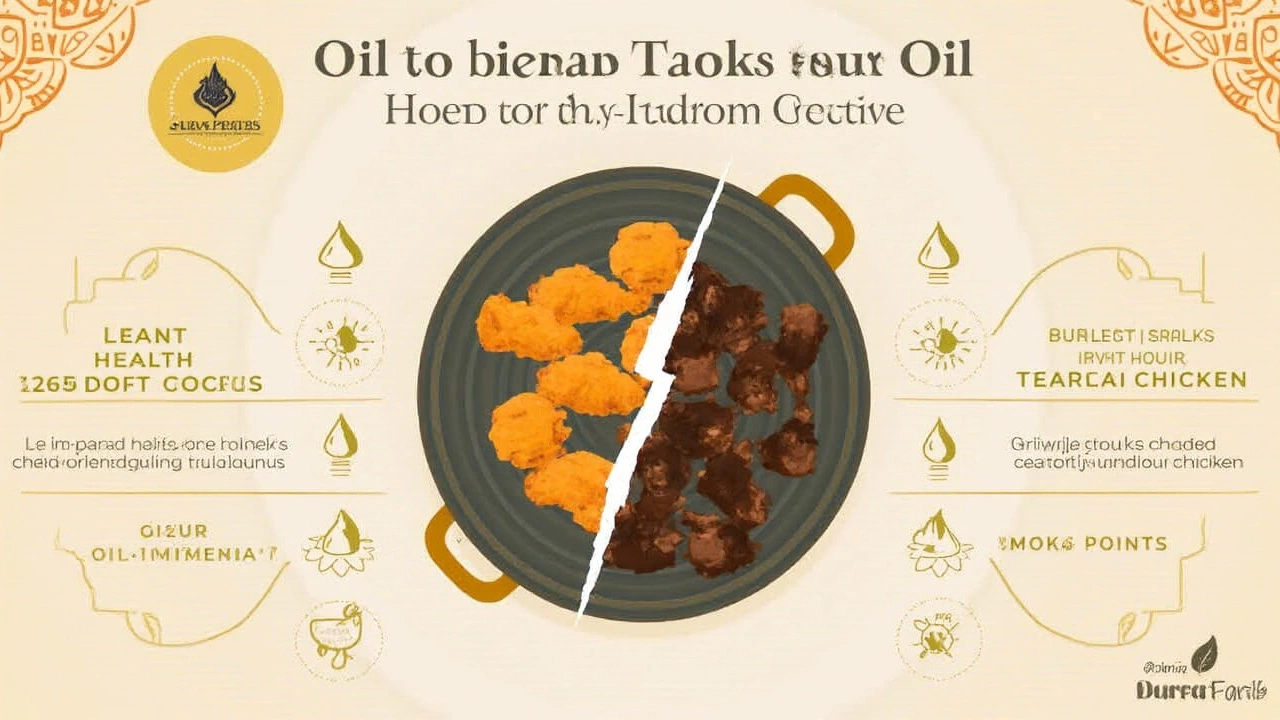
Common Mistakes with Oil
Even experienced cooks trip up when it comes to picking and using cooking oil for tandoori chicken. The oil you use can totally change the outcome, so let’s break down where things go wrong.
- Picking the Wrong Oil: Some people grab cheap vegetable or olive oil without looking at the smoke point. Extra virgin olive oil, for example, starts to burn under high heat, leaving your chicken with a bitter taste.
- Using Too Much Oil: Slathering chicken pieces in oil drowns out the spice marinade. You want just enough to coat the meat so the spices stick without pooling at the bottom.
- Dry Chicken from Too Little Oil: Skipping oil or barely brushing the chicken means it’ll dry out during cooking, especially under the grill or in a hot tandoor. Oil traps moisture inside, keeping the meat juicy.
- Ignoring Marinade Mixing: If you toss in oil last and don’t mix well, spices might clump up, and the flavor won’t spread evenly. Always whisk in the oil really well with yogurt and spices.
- Wrong Time to Add Oil: Some people baste chicken with oil throughout cooking, but most of the oil should go into the marinade at the start. Brushing once mid-cooking can help avoid burning.
To give you an idea how oils stack up when exposed to high heat (say, 450°F/232°C typical for tandoori chicken), check out this quick table:
| Oil | Smoke Point (°F) | Good for Tandoori? |
|---|---|---|
| Canola | 400 | Yes |
| Peanut | 450 | Yes |
| Sunflower | 440 | Yes |
| Extra Virgin Olive | 325-375 | No |
So if you want to nail your tandoori recipe every time, keep an eye on your oil choice and how much you use. These tweaks seriously up your tandoori chicken game—trust me, your guests will notice.


